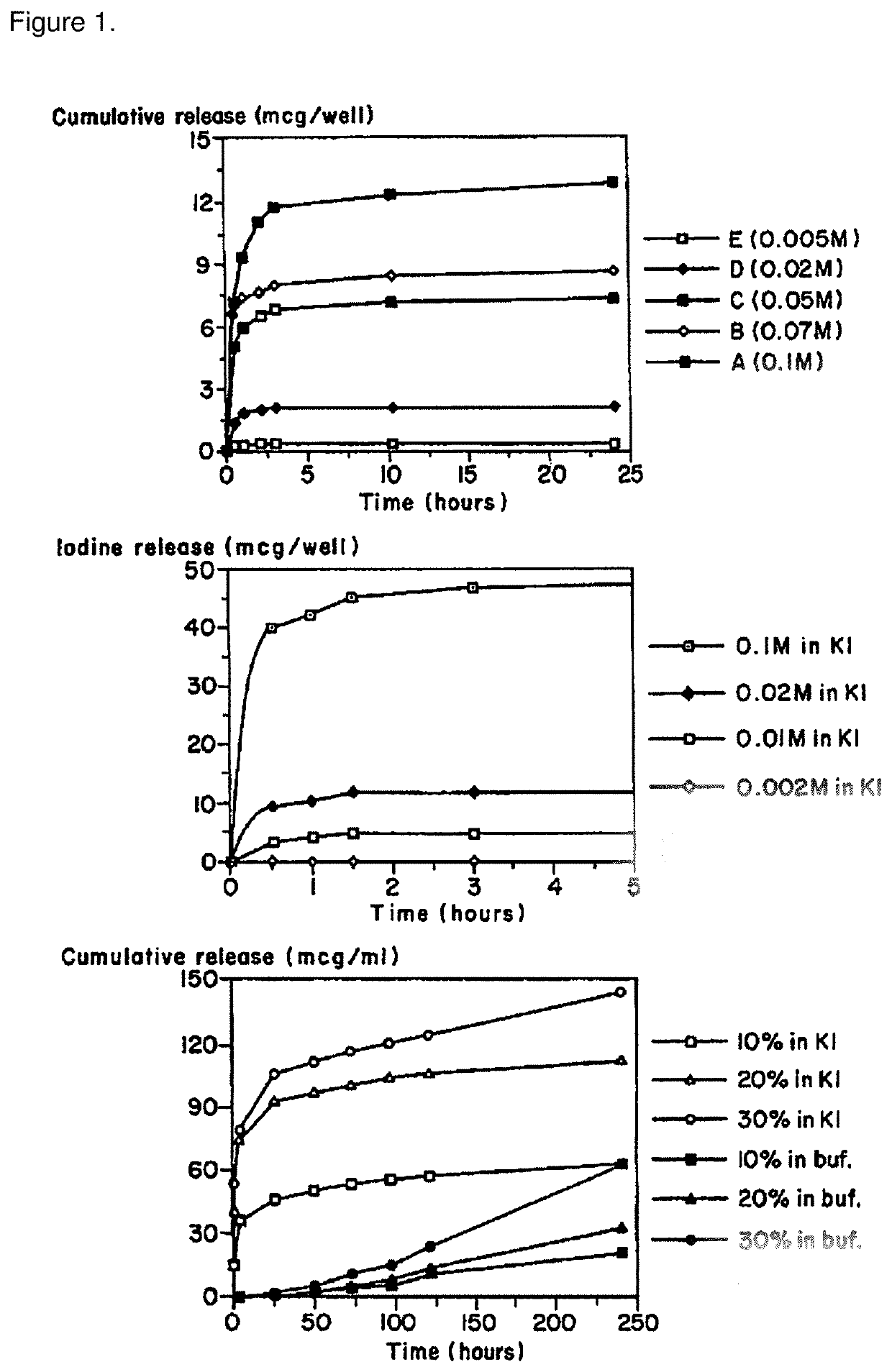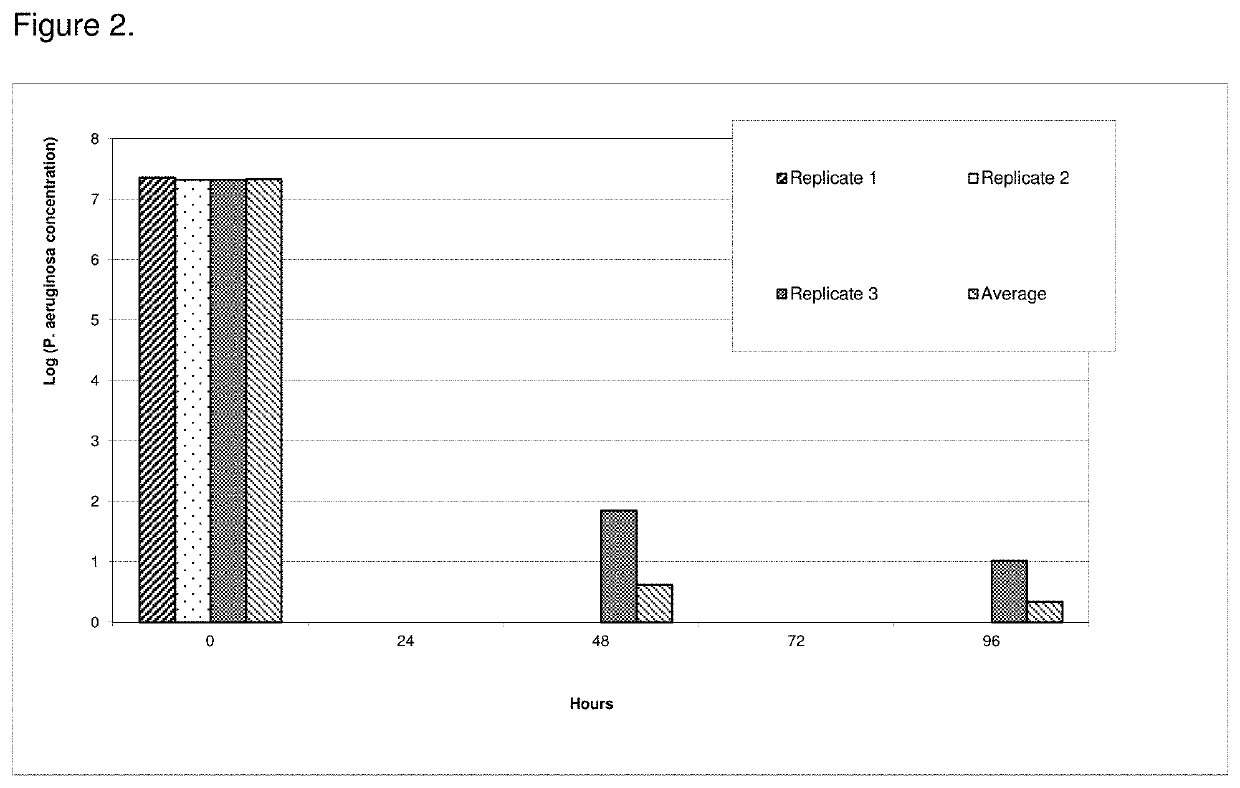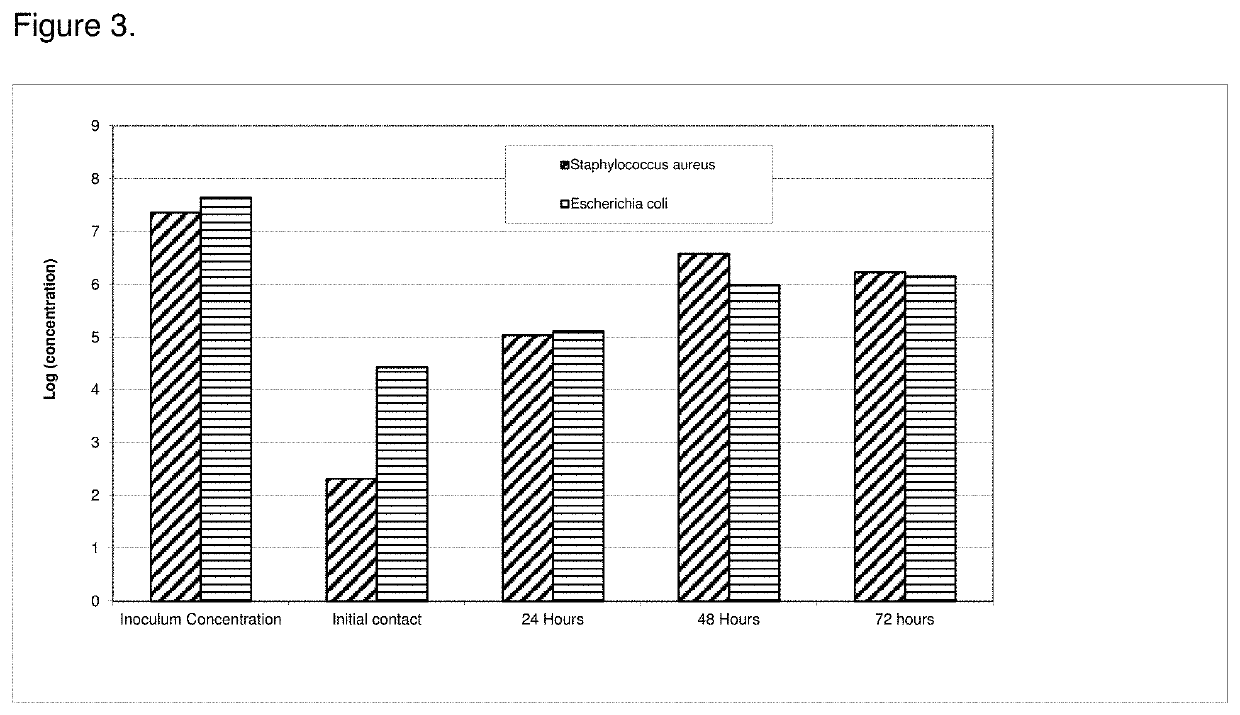Method for coating catheters with a layer of antimicrobial agent
a technology of antimicrobial agent and catheter, which is applied in the field of catheters, can solve the problems of little to no delivery control, dangerous infections, undesirable side effects, etc., and achieve the effect of reducing the amount of antimicrobial agent needed to demonstrate antimicrobial efficacy and reducing the number of live bacteria
- Summary
- Abstract
- Description
- Claims
- Application Information
AI Technical Summary
Benefits of technology
Problems solved by technology
Method used
Image
Examples
example 1
Zone of Inhibition Studies—Polyiodinated Resin Coated Catheters
[0087]The antimicrobial efficacy of the polyiodinated resin coated catheters (latex) of the present invention were determined using the bacterial challenge, Staphylococcus aureus ATCC 6538. Small segments of the polyiodinated resin coated catheter or a control catheter (no polyiodinated resin) were placed on 1 cm2 swatches of duct tape in an agar plate containing the challenge organism. After the required incubation time, the inhibition zone represented by a clear zone in the bacterial lawn surrounding the antimicrobial-containing article was readily obtained. A zone of inhibition is a region of the agar plate where the bacteria stop growing. The more sensitive the microbes are to the test article, the larger the zone of inhibition. In the two studies, the control catheter did not show a zone of inhibition whereas the iodinated resin coated catheter showed a zone of inhibition of 3 mm.
[0088]The following results show add...
example 2
Antimicrobial Properties of Iodinated Resin Coated Catheter
[0089]The antimicrobial efficacy of the antimicrobial catheters of the present invention was determined using a bacterial adherence assay (Jansen B. et al. “In-vitro efficacy of a central venous catheter complexed with iodine to prevent bacterial colonization” Journal of Antimicrobial Chemotherapy, 30:135-139, 1992). Accordingly, polyiodinated resin coated catheter (latex)-pieces were incubated in bacterial suspensions of P. aeruginosa for contact times of 24, 48, 72 or 96 hours followed by enumeration of adherent bacteria on the catheters using the colony count method. Pseudomonas aeruginosa is considered an excellent model for evaluation of efficacy due to its ruggedness and its resistance to antimicrobial agents. All polyiodinated resin coated catheters were coated with a 15% antimicrobial solution of triiodinated resin (4 micron) in acetone / tetrahydrofuran solution. Control experiments were run either with untreated (bla...
PUM
| Property | Measurement | Unit |
|---|---|---|
| thickness | aaaaa | aaaaa |
| body temperature | aaaaa | aaaaa |
| body temperature | aaaaa | aaaaa |
Abstract
Description
Claims
Application Information
 Login to View More
Login to View More - Generate Ideas
- Intellectual Property
- Life Sciences
- Materials
- Tech Scout
- Unparalleled Data Quality
- Higher Quality Content
- 60% Fewer Hallucinations
Browse by: Latest US Patents, China's latest patents, Technical Efficacy Thesaurus, Application Domain, Technology Topic, Popular Technical Reports.
© 2025 PatSnap. All rights reserved.Legal|Privacy policy|Modern Slavery Act Transparency Statement|Sitemap|About US| Contact US: help@patsnap.com



